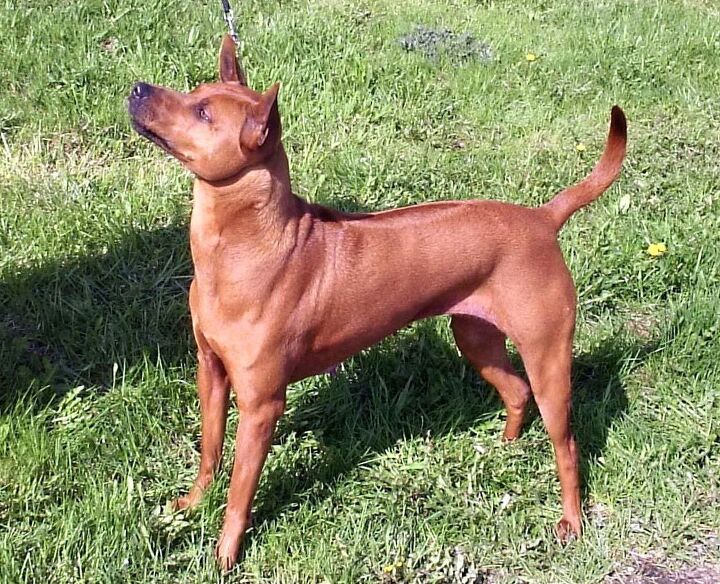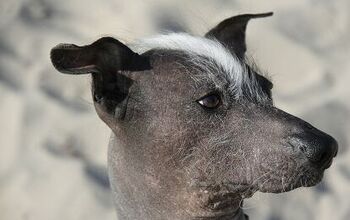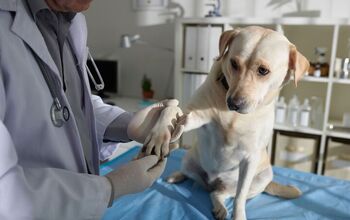Thai Ridgeback


About Thai Ridgeback
Few people in the United States have heard of the Thai Ridgeback, let alone met one in person. This breed was naturally developed in Thailand and has been a favored companion of those needing a loyal companion and watchdog. This breed is strong-willed and not for the novice dog owner.
With proper socialization and training, the Thai Ridgeback can make a wonderful family pet. Of course, he needs a lot of exercise but older kids can keep him exercised by playing ball or fetch. Running is essential to this breeds physical and mental health, so a fenced yard, dog park or owner who is an avid runner is necessary.
With proper socialization and training, the Thai Ridgeback can make a wonderful family pet.
Originating in Thailand, the Thai Ridgeback is an ancient breed without documentation of its ancestry. They were bred to be watchdogs as well as pull carts and eradicate rats, wild boar and cobras. Today, they provide protection for active families with older children.
There are no records documenting the development of the Thai Ridgeback. It is believed that this is a primitive breed that has been speculated to date back to the Middle Ages. Some believe that there is some relation to the Funan Ridgeback Dog, Hottentot Dog, Rhodesian Ridgeback and Phu Quoc Ridgeback. This is currently being investigated scientifically through studies of this breed’s DNA.
An athletic and high-energy dog, the Thai Ridgeback needs to be fed a high-quality diet of dry kibble. The food should be formulated for the particular dog’s activity level. Dry food is essential to this breed’s oral health as wet foods can cause caries, gum infections and bad breath.
An independent breed, the Thai Ridgeback requires an experienced owner who can assert himself to be the leader of the family.
An independent breed, the Thai Ridgeback requires an experienced owner who can assert himself to be the leader of the family. Manhandling and harsh discipline is counter-productive to training this breed. The Thai Ridgeback responds well to positive training methods and learns rather quickly when delectable treats are involved. Repetitive training sessions will prove to be worth the time.
One of the things that the Thai Ridgeback was bred to do was to pull carts in Thailand. Nowadays, he is well-suited for draft trials, obedience and agility. Of course, this breed can be an incredible watchdog.
The Thai Ridgeback usually weighs between 51 and 75 pounds and stands between 20 and 22 inches tall at the shoulders.
A breed that is naturally protective of his family, the Thai Ridgeback is a diligent and brave watchdog. He is wary of strangers so to prevent aggressive behavior, this breed should be well-socialized as a puppy and throughout his life. This dog is energetic and playful with his family however; this breed may be too much for families with very young kids. Older and active children will become best friends with the Thai Ridgeback.
Thai Ridgebacks are pretty healthy dogs. The breed is seeing incidences of hip dysplasia which may or may not be environmentally caused. Thai Ridgebacks are also predisposed to having dermoid sinus.
On average, the Thai Ridgeback lives to be between 10 and 12 years old.
Thai Ridgebacks were bred to work and they require a lot of exercise. Long walks or jogs are great but this breed also needs room to stretch out and run. He can tolerate living in condos or apartment buildings provided there is a dog park nearby that he can use.
Without enough exercise, the Thai Ridgeback can become incredibly destructive and disruptive. Although not a barker, the dog will become frustrated and try to communicate his need for activity vocally. He will also tear up furniture and chew whatever he can get his teeth on if he is bored. Exercise is essential to living peacefully with this breed.
A breed that is naturally protective of his family, the Thai Ridgeback is a diligent and brave watchdog.
The AKC writes: “The Thai Ridgeback is being recorded in the AKC Foundation Stock Service – The AKC provides this service to allow purebred breeds to continue to develop while providing them with the security of a reliable and reputable avenue to maintain their records. FSS breeds are not eligible for AKC registration.” The Thai Ridgeback has not been recognized by the AKC at this time.
Thai Ridgebacks have a smooth coat. The acceptable colors are black, gray, brindle, red, white and fawn. This breed does not require a lot of grooming. A thorough brushing each week will keep the Thai Ridgeback looking sleek. When dirty or malodorous, the dog should be bathed.
Thai Ridgeback puppies require early socialization to ensure that they will be accepting to strangers and other animals. Because they are independent, this breed needs to start puppy obedience training as early as possible. Housetraining can be difficult however; the use of a crate will make potty training much easier.

Amy Tokic, Editor of PetGuide.com, is a passionate animal lover and proud pet parent of Oscar, a Shih Tzu/Chihuahua cross, and Zed, a Japanese Chin. Her love of animals began in kindergarten, when she brought her stuffed dog Snoopy into class with her every day. Now, she writes about her adventures in pet ownership and tirelessly researches products, news and health related issues she can share with other animal enthusiasts. In her free time, Amy loves perusing used book and record stores, obsessing over the latest pet products available and chasing squirrels with wild abandon (a habit attributed to spending too much time with her pooches).
More by Amy Tokic

























